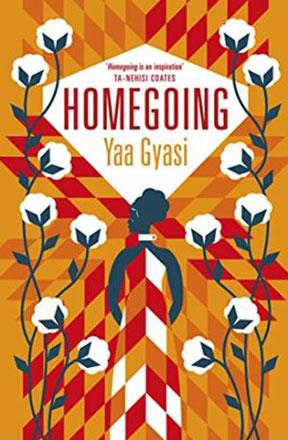You are here
‘Everyone belongs to themselves’
By Sally Bland - Jan 15,2017 - Last updated at Jan 15,2017

Homegoing
Yaa Gyasi
New York: Alfred A. Knopf, 2016
Pp. 305
Spanning two continents and nine generations, Yaa Gyasi unfolds a family saga that is by turns thrilling, heartbreaking and inspiring. This is no ordinary family but one divided by the vicissitudes of colonialism and slavery. While one branch of the family remains in Africa, the other is transported into slavery in the United States.
“Homegoing” is a historical novel, but more than simply illustrating slavery’s long-term effects on Africans and African-Americans, Gyasi makes one feel the experience with her vibrant prose, a set of unforgettable characters, and her recreation of African culture and how it morphed into African-American culture.
In an Asante village, Maame, the family matriarch, tells her daughter, Esi: “Weakness is treating someone as though they belong to you. Strength is knowing that everyone belongs to themselves”. (p. 38)
Obviously, this wisdom is ignored by colonialism, but with Britain’s penetration of what is today Ghana, Fante and Asante chieftains seem to forget it as well. Faced with an unknown enemy and lured by the chance to enrich themselves, they begin selling their fellow Africans to British slave traders. While the British stay safely ensconced in the Castle on the coast, the chieftains compete for their favours, weakening the fibre of their own society.
It all starts with a greedy, superstitious mother who marries Effia off to a British slave trader in a ceremony where the girl must “repeat words she didn’t mean in a language she didn’t understand”. (p. 16)
This keeps Effia in Africa, but irrevocably sunders her from her own people. She is also in for some terrible shocks. Living in the castle, she hears the moans of slaves kept in the dungeons below, but little does she know that one of them, Esi, is her sister — Maame, not the woman who married her off, being her real mother. Esi’s transport to America marks the family’s definitive division. From then on, the stories of the two branches are told in alternating chapters, generation after generation.
On both sides of the Atlantic, the members of the family experience tragedies and alienation from their original culture. While the fate of those sold into slavery is most horrible, those who remain in Africa suffer from escalated tribal wars incited to provide more captives to be sold.
But successive generations produce brave souls ready to defy their fate. Esi’s daughter, a slave on a cotton plantation in Alabama, sacrifices herself to procure her son’s freedom. Effia’s grandson leaves an arranged marriage and crosses the tribal divide to marry an Asante woman who is also eager to break out of the mould. Having lost her brothers in tribal wars, she declares, “I will be my own nation.” (p. 99)
The next generations in America discover that freedom is contingent. The son who escaped to the North has his life turned upside down by a new law allowing the recapture of escaped slaves. Even after slaves are emancipated, his son is arrested on false pretexts and sold to work as convict labour in the coalmines. He “could hardly remember being free, and he could not tell if what he missed was the freedom itself or the capacity for memory” (p. 162).
By now, memories of Africa have faded, and the next generations struggle to make a life despite racial discrimination, enforced poverty, lack of jobs, availability of drugs and the unjust criminal justice system — conditions which still prevail, making Gyasi’s story of more than historical relevance.
Meanwhile, back in Africa, young women are also seeking freedom but discover the difficulties of defying tradition. One is caught between savouring Gyasi’s poignant prose and compulsively reading ahead to see if any of them reach fulfilment and if the two branches of the family will meet.
Marjorie, the last of the African line, is a voracious reader who spends three years searching for a book “that she can feel inside her”. (p. 270)
“Homegoing” is such a book, for Gyasi is a gifted storyteller, adept at describing the world from unexpected angles to create a you-are-there effect and make one think about things in a new way. With so many characters, one might expect each to be sketchy, but for all the expansiveness of her plot, Gyasi never sacrifices depth. Each major character is full-blown and their environment is described in concrete detail, whether it is an African village, a southern plantation or New York City. Knowing that the author was born in Ghana and raised in Alabama may partially explain how she so deftly captures the landscapes and cultures of both Africa and America.
While most of the characters are victimised in one way or another, they are so much more than victims. There are great talents and strengths on both sides of the Atlantic, and great loves — between man and woman, parent and child, and between kindred spirits who may not be related, for despite the focus on family, Gyasi’s subtext is that it is not blood lineage but how one leads one’s life that matters.
Related Articles
Dozens of objects like these go on show on Tuesday at the Dutch national Rijksmuseum as it opens a landmark exhibition on slavery highlighting The Netherlands' dark colonial past.
The Moor’s AccountLaila LalamiNew York: Vintage Books, 2015Pp.

















